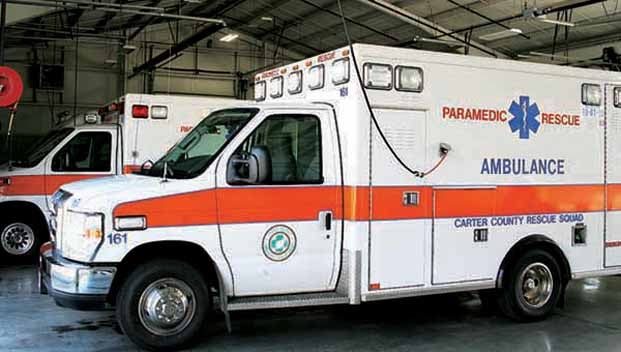Where does Carter County EMS turn next
Published 11:00 pm Monday, October 18, 2021
|
Getting your Trinity Audio player ready...
|
BY IVAN SANDERS
STAR STAFF
ivan.sanders@elizabethton.com
Carter County leaders are working to figure out “what’s next” in efforts to address EMT staffing shortages and delayed response times.
“This is a very serious concern for myself and our residents,” said Carter County Mayor Patty Woodby, adding the staffing challenges faced locally echo problems nationwide.
“They are doing everything they can but with such a staff shortage (the department is only staffed at 50 percent) we also have to let the ones currently on staff rest or that becomes another concern. Director Arnold is advertising for job openings but there have not been many apply, either out of concern for the pandemic or lack of experience needed for the job. I would ask the community to please be patient with this process and to not tie up 911 calls unless it is an extreme emergency so that we can make sure that our ambulances can get to the call in an expected amount of time,” she said.
Dr. Robert Acuff, Carter County Commissioner and a member of the Carter County EMS board, said that hopefully, a discussion on the issue will take place at the next EMS board meeting which is scheduled for Tuesday.
“The EMS is the county’s health safety net,” Acuff said. “We hope to work with Dr. Tom Kincer’s (Associate Dean for Rural and Community Programs at East Tennessee State University – Quillen College of Medicine) rural medicine program and allow students to fill in the gap before medical school in getting a degree as an EMT to help the issue with the rescue squad.”
EMS Director Terry Arnold said funding, stress, and a lack of qualified applicants all contribute to the challenge of finding qualified staff. “The demand is unreal. You come here at 7 a.m. and you don’t get back until the other shift comes back at 7 p.m. that night. Most of the time you are out running calls. COVID put a big hit on everybody and people are getting out of the field and health care business because of that. Most people are going somewhere else with better benefits or they are just getting completely out of the system. I have people that have been here 26 and 27 years that have left to go into something else.”
Arnold is in need of three more trucks on the road per day which would require nine people per shift for four shifts.
“We empty out the office and everyone is out on a truck and it’s been tough on us,” Arnold added. “The hospitals have done this to EMS across the nation. They are getting free labor for our guys having to sit there with those patients. It’s not our problem that the hospitals don’t have the staffing. When you go to the hospital and wait three or four hours to get a bed that’s a problem. I would never want to do that. They have got to have provisions for us to offload our patients in a reasonable time and that is 10-15 minutes.”
Woodby said hospitals are keeping EMS squads on-site for “hours at a time until a bed is secured for their patient.”
“We have received help from other counties and that is appreciated,” she added. “We are a team and must work as a team across county lines until we can get this pandemic behind us. I want to thank Director Arnold and his staff for all they are doing for our community during such an unpredictable time.”
Woodby has reached out to state and federal government officials as well for assistance to help Carter County EMS recoup over $119,000 spent on rescues that occurred on state and federal land which impacts the EMS budget.
While those funds would help, the department will continue to face challenges. Acuff said a new law taking effect in 2022 will require anyone riding on a truck to have an EMT license, which eliminates the use of unlicensed EMS drivers.
The certification process may prove to be a deterrent. “You have to go through stages to become an EMT and it takes a while,” Arnold said. “You have struggles but you have to keep at it.”
It can take “10 to 15 years and maybe even 20,” to catch up with the needed people required to operate the EMS as “there are not enough people interested in EMT anymore,” he said.





